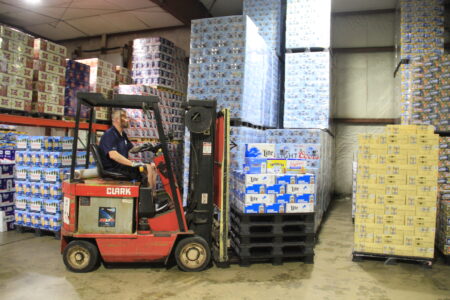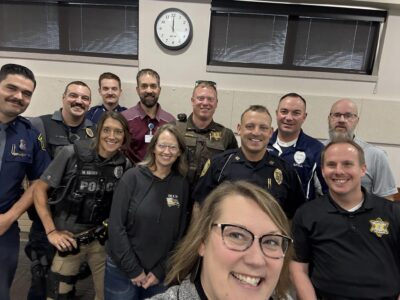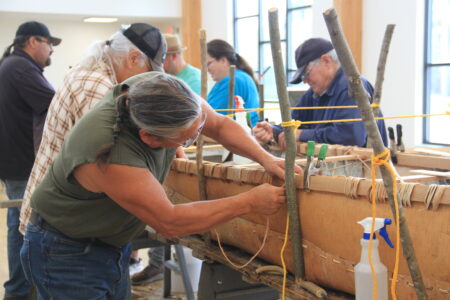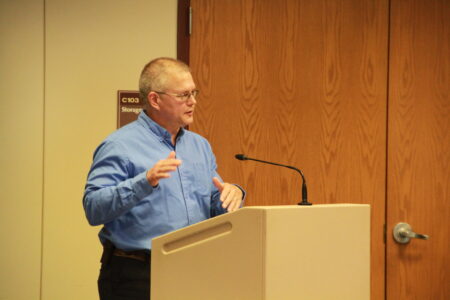Schools, law enforcement develop emergency response protocols
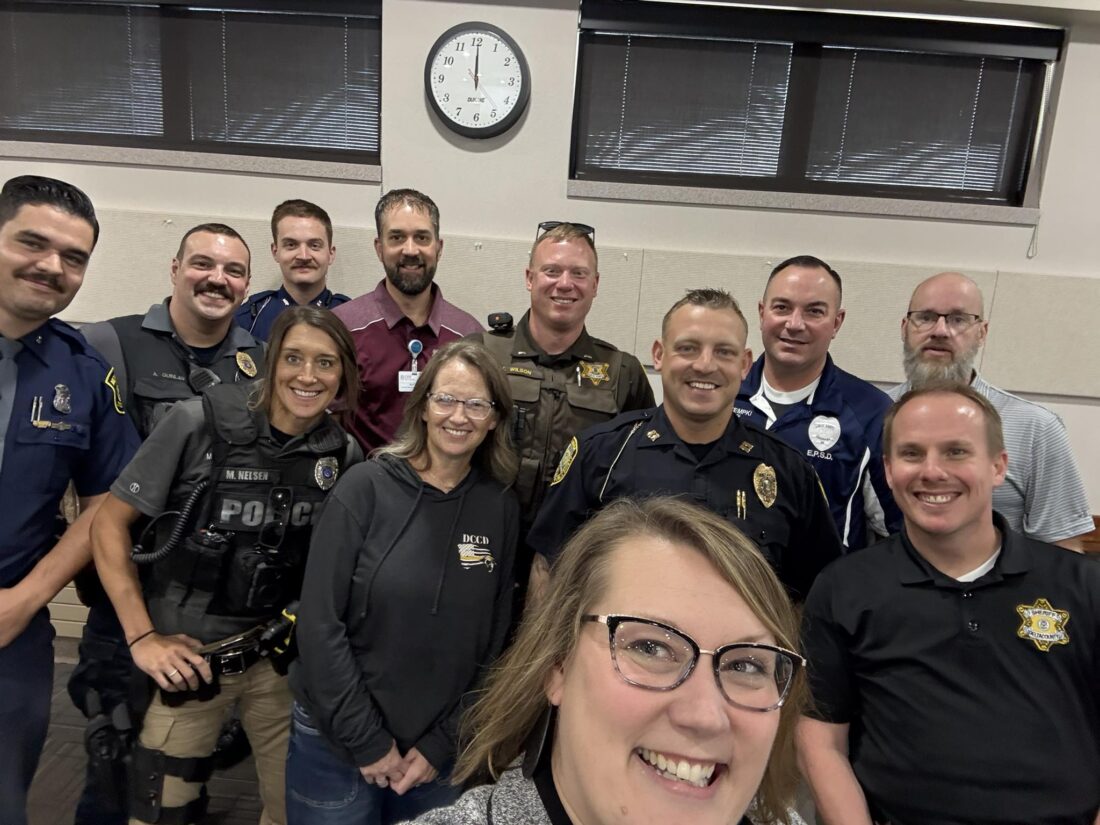
Delta and Schoolcraft counties will now officially utilize a Standard Response Protocol created by the “I Love U Guys” Foundation. From left are Trooper Douglas O'Hagan, Michigan State Police; Detective Sgt. Aaron Quinlan, Gladstone Public Safety Department; School Resource Officer Mallory Nelsen, GPSD; MSP Trooper Colton Richard; EMS Coordinator Matt LaCrosse, OSF - Delta Medical Control; Director Jen Peterson, Delta County Central Dispatch; Lt. Kurt Wilson, Delta County Sheriff’s Department; Capt. Austin Young, Escanaba Public Safety Department; Dr. Kristina Hansen, Delta Schoolcraft Intermediate School District; School Resource Officer Dustin Stempki, EPSD; Delta County Emergency Management Coordinator Paul Geyer; and School Resource Officer Kyle VanDrese, DCSD. (Contributed photo)
ESCANABA – All school districts within Delta and Schoolcraft counties have entered into a memorandum of understanding with local law enforcement and first responders to standardize emergency response protocols.
The memorandum, or agreement, establishes action-based language that is used in emergency situations among all parties assisting in potential threats or emergency situations.
Instead of schools or central dispatch saying code words that secretly mean different emergency situations, everyone will now utilize simple statements that mean exactly what they say, like “lockdown.” Each piece of SPR language is stated twice to ensure clarity.
“It standardizes the language, so in the past, school districts have had a ‘code yellow’ or ‘code blue’ or ‘We are going to call Mr. Lock to the office.’ There were all of these different ways that districts responded to events and notified people within the building that something was happening,” said Kristina Hansen, superintendent of the Delta-Schoolcraft Intermediate School District.
The Standard Response Protocol, or SPR, includes six statements that school districts, first responders and law enforcement agencies are trained in learning and using: hold, secure, lockdown, evacuate and shelter.
The protocol comes from the “I Love U Guys” Foundation, which was established in 2006 by Ellen and John-Michael Keyes after a school shooting took the life of their daughter, Emily. Their foundation offers this information, including an SPR curriculum and posters, for free on its website.
Paul Geyer, Delta County emergency management coordinator, has “championed” the Standard Response Protocol in the area after learning of the protocol, Hansen said.
The Michigan State Police Office of School Safety provides safety academies to school officials and others throughout the state where they recommend the SPR. A number of school resource officers, school administrators and other emergency managers attended a safety academy that discussed SPR two years ago.
“Through different events and investigations, it’s been discovered that people kind of forget what they’re supposed to do, so this method standardizes that language and makes very clear, concise directions for everyone involved,” Hansen said.
Hansen noted the lockdown during the beginning of the school year at the Escanaba High School was eye-opening.
“After the situation that happened at the beginning of the year at Escanaba (High School), we realized that it is very, very important for law enforcement and schools to be speaking the same language, especially when there is a potential big threat or emergency that’s happening,” she said.
In the situation of a lockdown, the first responsibility of the staff and administration inside the building is to ensure students are safe, Hansen said.
“We’re trying to also keep staff safe, so it might take a little bit of time for people to get the information that we’re going into a lockdown, but that’s just because we’re trying to make sure that everyone inside the building is safe first. When it’s safe for us to communicate, that will typically happen through the channels that schools use,” she said.
While this language is critical in large-scale emergencies, it is also beneficial in less extreme situations than a school shooting, such as tornado warnings, medical emergencies and custody disputes occurring in or near the building.
School districts in the area have been using the SPR language for a couple of years, but it was not “followed to the law,” Hansen said. The State of Michigan requires 10 safety drills to be completed per year, so the SPR language is incorporated into the drills that are already being executed.
School officials who have signed the memorandum of understanding include: Superintendent DeeDee Thill, Big Bay de Noc School; Superintendent Kristina Hansen, Delta-Schoolcraft Intermediate School District; Superintendent Coby Fletcher, Escanaba Area Public Schools; Superintendent Jay Kulbertis, Gladstone Area Public Schools and Rapid River Public Schools; Superintendent Eric VanDamme, Mid Peninsula School District; and Superintendent Matt Johnson-Reeves, Nah Tah Wahsh Public School Academy/Hannahville Indian School.
Law enforcement and first responder signees include: Director Jen Peterson, Delta County Central Dispatch; Sheriff Todd Tardiff, Delta County Sheriff’s Department; Delta County Emergency Management Coordinator Paul Geyer; Director Darren Smith, Escanaba Public Safety Department; Director Ron Robinson, Gladstone Public Safety Department; and Chief of Police Jeff Hansen, Hannahville Police Department.

